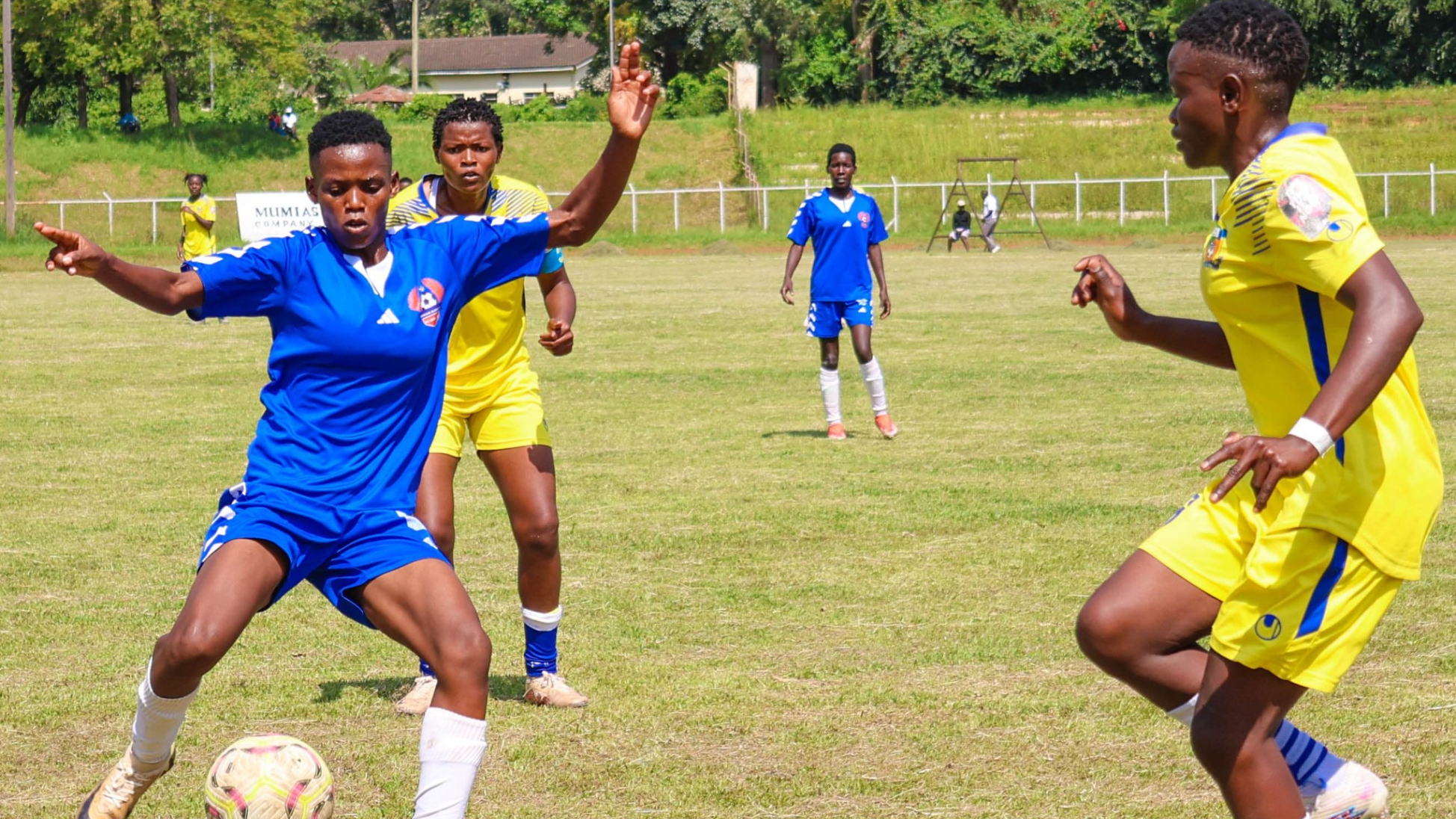Football Kenya Federation (FKF) Women’s Cup semifinal between Vihiga Queens and Bungoma Queens offered an intriguing tactical contrast despite both sides lining up in identical 4-3-3 formations. In the end, it was Vihiga’s adaptability and individual brilliance that made the difference, as they saw off Bungoma 2-1 to secure a place in the final against Kibera Soccer Women.Follow our WhatsApp channel for more newsVihiga Queens set up with Sally Kavingukha in goal, Christine Adhiambo at right back, Yvonne Muyoka on the left, and a central defensive partnership of Phanice Lwosi and Ruth Khasoha. The midfield trio featured Anita Nantume at the base with Martha Amnyolette and Providence Khasiala operating ahead of her. In attack, Diana Cherono and Alice Mideri flanked center forward Swaum Masungo.Bungoma Queens, on the other hand, lined up with Dorine Ouma in goal, a back four of Deborah Barasa, Miriam Kurgat, Eunice Alivista, and Belinda Nanjala. Sarah Masiebi sat in the holding midfield role while Becky Nyongesa and Winnyrose Wanyama played as advanced central midfielders. Upfront, Chebungei Ruth spearheaded the attack, flanked by Caroline and Catherine Khaemba on the wings.From the opening whistle, Vihiga’s approach was clear. They looked to dominate possession by building from the back, with their midfielders dropping deep to collect the ball and connect with the forward line. Nantume played a vital role in the first build-up phase, consistently offering herself as a passing outlet between the backline and midfield. The fullbacks pushed high up the pitch to provide width, while the wingers tucked in to form narrow attacking channels.McCarthy’s motivation that earned him his first Harambee Stars victoryA key tactical feature for Vihiga was the movement of Cherono. Though deployed on the wing, Cherono frequently tucked inside to partner with Masungo in a dual-striker role. She also dropped deeper into midfield to combine with Khasiala and Amnyolette, creating overloads and allowing Vihiga to sustain possession in advanced areas. Her fluid movement often disrupted Bungoma’s defensive shape, and it was no surprise that she was involved in the opening goal. A series of quick passes saw Cherono arrive at the end of a flowing move to score, giving Vihiga a deserved lead.According to data from Tisini, Cherono’s influence was unmatched. She registered five shots on target, scored one goal, and had eight touches inside the opposition box—the most for her team. Her tactical intelligence and sharp movement earned her the Player of the Match accolade and were central to Vihiga’s success on the day.##NAJAVA_MECA_8975649##Bungoma, in contrast, employed a far more direct strategy. Eschewing build-up play, they chose to bypass midfield by launching balls into the wide channels. With speedy wingers and a striker adept at chasing long passes, they aimed to stretch Vihiga’s backline, which operated with a high defensive line but did not apply adequate pressure on the ball. This imbalance left Vihiga vulnerable to balls in behind, and as the match wore on, their defence began to show signs of strain.In the 30th minute, a moment of miscommunication between goalkeeper Kavingukha and her defenders allowed Khaemba to pounce and level the score. Bungoma’s directness and intensity forced Vihiga into errors, and by halftime, the match was delicately poised at 1-1.Looking to regain control, Vihiga coach Boniface Nyamunyamu made tactical changes at the break. He withdrew Adhiambo and Nantume for Noel Amwata and Kebedi Robai. Robai took up the holding midfield role, while Amwata moved to the left wing, pushing Mideri into midfield. The idea was to stabilise the midfield and reassert dominance in wide areas.Kenyan stars set to light up ‘night of potential records’ in OsloHowever, the changes had little immediate impact. Bungoma began the second half with more aggression and maintained their high pressing. They disrupted Vihiga’s build-up play and turned over possession in advanced zones. Their focus on attacking the flanks, particularly the space left behind Vihiga’s overlapping fullbacks, yielded numerous promising openings. Catherine continued to torment the left side of Vihiga’s defence, where Mideri—now playing in an unfamiliar position—struggled to contain her.Despite their dominance, Bungoma failed to convert their chances. Their high-tempo approach began to take a toll, and they grew visibly fatigued in the final quarter of the match. The shift in physical energy gave Vihiga a route back into the game.In the 84th minute, they capitalised. A quick transition saw Amwata receive the ball in midfield and, noticing that goalkeeper Ouma was off her line, unleashed a long-range shot that nestled into the back of the net. It was a moment of sharp awareness and technical execution that tilted the balance once more in Vihiga’s favour.CONGRATULATIONS QUEENS!#VihigaQueens#LegacyMakers pic.twitter.com/dX6JyqZyDF— Vihiga Queens FC (@Vihigaqueensfc) June 9, 2025 From there, Vihiga managed the game efficiently, holding on for the win and sealing their place in the FKF Women’s Cup final. They will face Kibera Soccer Women, who booked their spot with a 2-0 victory over Police FC in the other semifinal.This semifinal was a showcase of contrasting tactical ideologies. Vihiga Queens, rooted in structured build-up and positional play, showed flashes of brilliance, particularly through the efforts of Cherono.Bungoma Queens, meanwhile, demonstrated the effectiveness of direct, high-intensity football, especially when targeting space behind a high defensive line. Ultimately, it was Vihiga’s tactical flexibility and key moments of quality that proved decisive on the day.From glory to grave: Five Kenyan footballers killed over criminal ties

